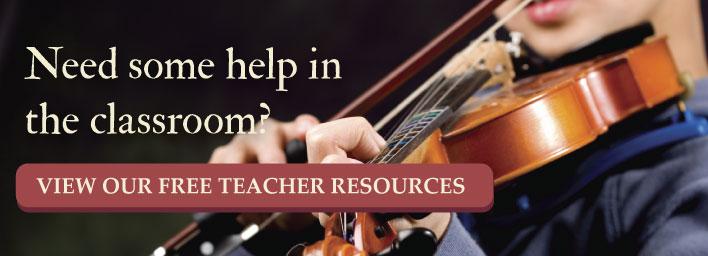The Real Reason Your Music Students Aren't Practicing

 Each day (or week) you teach scores of children and adolescents the basic rudiments of music education and how to learn to play a variety of instruments. But, if you’re like most educators, you also teach numerous different levels of talents and progressions, so you’re probably over worked. However, you do it because you have a gift for inspiring others and a generous nature, and you know that most of your students have a real desire to learn and play.
Each day (or week) you teach scores of children and adolescents the basic rudiments of music education and how to learn to play a variety of instruments. But, if you’re like most educators, you also teach numerous different levels of talents and progressions, so you’re probably over worked. However, you do it because you have a gift for inspiring others and a generous nature, and you know that most of your students have a real desire to learn and play.
Yet, if that’s true, why won’t your budding musicians practice at home? It seems like the only time they open their cases is during your class session. At all other times their violins, trumpets, and flutes are resting comfortably in the dark, waiting for use.
Although it can be difficult to get students to practice at any time, especially when you take into account their full schedule of extracurricular activities, the reasons they’re not practicing as they should be might sincerely surprise you. Although TV, homework, virtual games and texting play a role in your students’ lack of practice, sometimes the reasons stem from a more fundamental motive: difficulty with their instruments.
Performance Problems
It’s true. And, it can be particularly true when the instrument is of the stringed variety. Violins, cellos, and violas all require a good deal of quality to make these instruments responsive for new students. But, the cost of a quality violin is often viewed prohibitive by parents who aren’t sure if their child’s enthusiasm will last.
So, if you’ve noticed that you have to spend a lot of time adjusting, tweaking, and generally babysitting poor quality instruments in your class room, these same types of ‘mechanical’ problems make it very difficult for students to tangle with practicing at home.
Performance issues can discourage students and make practices seem like a giant headache; one that students will naturally put off.
Common Issues
Some of the common issues that plague beginning violin students are related to the quality and construction of their instruments. Fortunately, many elements of a stringed instrument are made for adjustment. These common issues can make it difficult for your students to practice at home:
- Slipping/Sticking Pegs—If you can’t tune your violin, you simply can’t play it. Problems resulting from continually loose or stiff pegs make practicing a huge chore.
- Size and Fitting Inaccuracies—Playing an instrument that is too large isn’t only difficult, it can create serious injuries. Students should be properly sized for the right violin, and fittings like the chin rest, fingerboard, and neck shouldn’t be uncomfortable or difficult to reach when held in the playing position.
- Inferior Bridge—This can cause extreme difficulty when trying to fret the different notes. The bridge should rest perfectly flush with the table of the violin and be situated so that the height creates an even gap between the strings and the fingerboard. This creates the “action,” which is a key part of how playable the violin is; the better the fit, the easier it is to play.
- Soundpost Placement—The small wood post inside the violin has a huge impact on the sound produced. If it has shifted, practicing will be a penance.
What You Can Do to Help
Although there’s not much that can be done about changing the quality of the construction, there are some steps that you and your students can take that will make a big difference in the sound and playability of their instruments. And, in turn, these changes will help encourage them to practice more often at home.
All of the common issues listed above can be remedied fairly easily at your local violin dealer or specialty shop. Luthiers (stringed-instrument craftsman) can make these adjustments, often do so for very moderate service charges.
Encourage your students to visit a Luthier shop if you’ve noticed some of these issues in class. But, don’t be surprised when you begin to notice big changes in their progress. Fixing these performance issues can have a positive impact on how often your students practice, which will help them advance.
In the event that it’s not instrument performance issues that are preventing home practice sessions, speak to your students about their schedules. Perhaps you can encourage a few classmates to start a private ensemble, help them find access to after school facilities that will allow practice sessions, or point them to an on-line interactive practice platform.
Finding ways to overcome a lack of practice with your students will help them advance their music progress and develop the skills with their instrument that will offer lifelong benefits.


